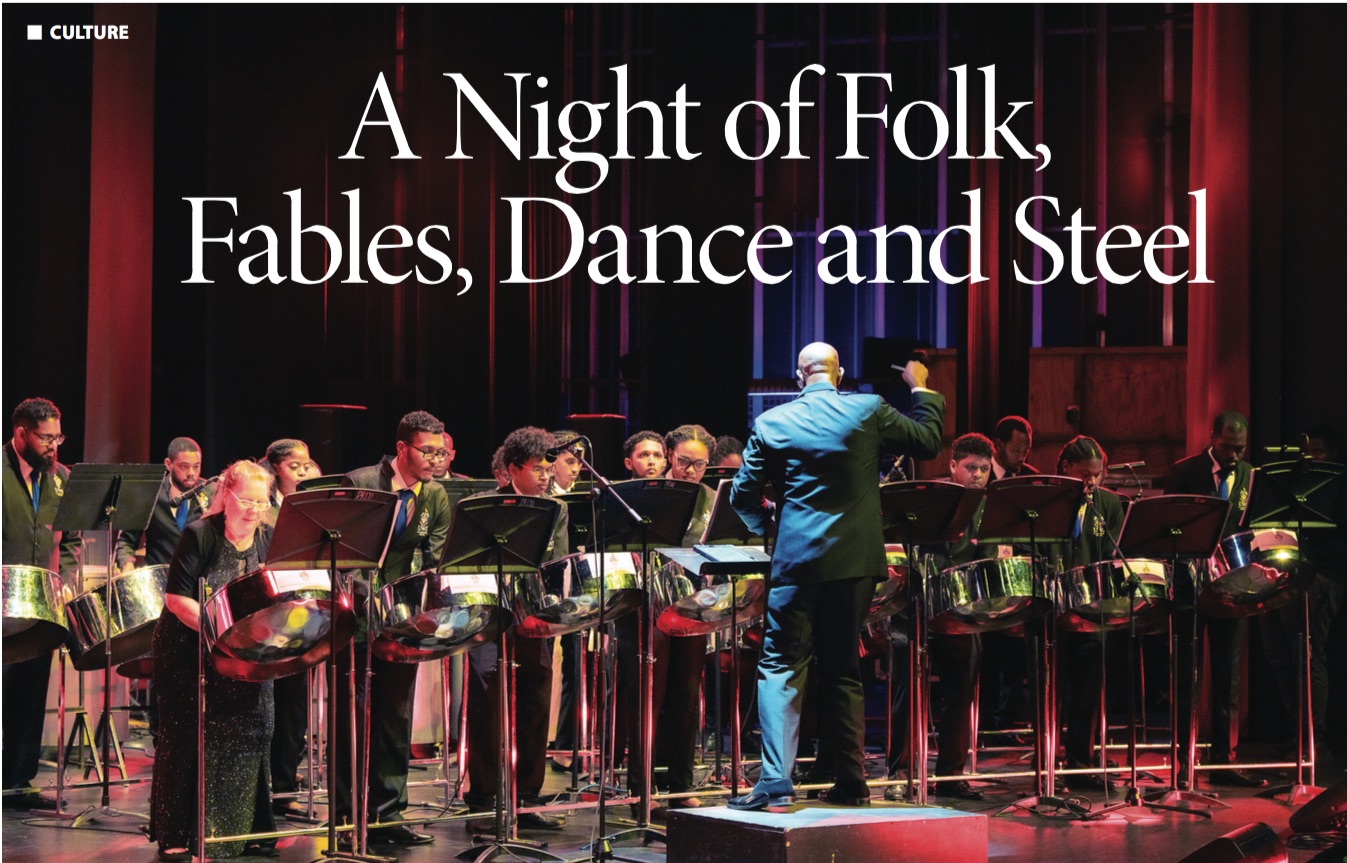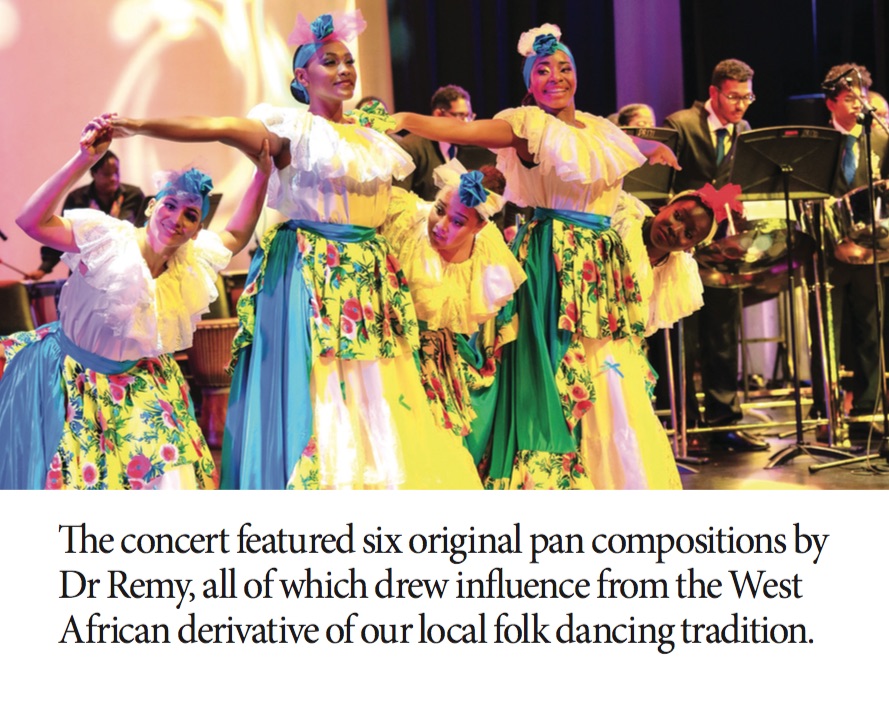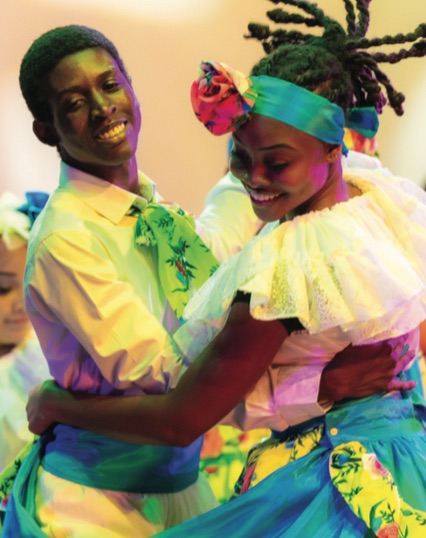
UWI Arts Steel performs at “Dancing on Steel”. Conducting is Mr Jessel Murray, Head of DCFA, and playing pan at left, front row is Dr Jeannine Remy, Senior Lecturer and prolific composer and arranger for the steelpan.
In Queen’s Hall on September 15, 2024, The UWI Arts Steel and The UWI Arts Dance hosted Dancing on Steel: a musical production where dance, drama and pan intertwined to give the audience a taste of our folk heritage. The live performance was recorded and later viewed by an international audience for the Percussive Arts Society International Convention (PASIC 2024).
The music for Dancing on Steel, for which Department of Creative and Festival Arts (DCFA) Head Mr Jessel Murray was the conductor, is the brainchild of Dr Jeannine Remy, a longstanding Senior Lecturer of Music at The UWI and a prolific composer and arranger for the steelpan.
The performance also included choreography by Ms Joanna Charles, an icon of dance in T&T who is a graduate of both The UWI Drama and Dance programmes, as well as a Dance instructor at the DCFA. UWI's invitation to participate in the annual PASIC conference is no small feat, and speaks to the excellence of the UWI Arts Steel ensemble.

"This is our second invitation to perform for PASIC, which is really just incredible," says Dr Remy. “This year, many groups applied and were denied; we were accepted and invited to perform, so this is something that we are really proud of."
The concert featured six original pan compositions by Dr Remy, all of which drew influence from the West African derivative of our local folk dancing tradition. The music and dance encapsulate the essence of six of Trinbago's most iconic Afro-French Creole dances: Bélé, Tobago Jig, Kalinda (stick fighting), Limbo, Bongo, and Calypso.
"All of the music and dances speak to us as Trinbagonians and explore all the different influences that we've had and who we have become," says Ms Charles. "As a choreographer, I like to work within the narrative compositional structure, where dance is used to create storyline, so I used Dr Remy's compositions and arranged them in such a way that the dances work with the music to tell a story, the story of us."
In the manner of a fairy tale, the story of Dancing on Steel follows a young museum keeper who is suddenly thrown into the dreamlike world of a troupe of folk dancer statues which come to life and take him on a musical journey of love, marriage, death, mourning, and celebration. Each movement of the pan suite works in tandem with the dances to tell the story of Dancing on Steel.
"You really have to see this folk music come alive in story form," says Dr Remy, "I just don't think that anything quite like this has been done before. We've gotten standing ovations both here in Trinidad and in Texas." Dr Remy herself performed with the ensemble. "Dancing on steel is a lot of fun to play, and each movement is challenging," she says, "The performers experience so much joy while practicing. That's why I'm playing. I'm not just going to sit back and let them have all the fun. I'm going to play!"
Dancing on Steel was commissioned by Professor Michael Mizma and the San Jacinto Central Steel Band at San Jacinto College in Texas, and has already been performed both in Texas and here in Trinidad at the Naparima Bowl. Aside from serving as a virtual showcase concert for PASIC, the performance of Dancing on Steel marks the end of a year of celebrations to commemorate the 20th anniversary of the UWI Arts Steel ensemble.

In a world where the cultural forms of larger nations tend to dominate the creative space, this performance demonstrates the power of our own traditions.
"Our folk dances help us to understand who we are and where we come from. Just like any other country, we too – through our diverse heritage – have developed our own unique folk style," says Ms Charles.
She stresses that performances like Dancing on Steel can help us come to appreciate that our own local folk dances can stand alongside the other cultural and artistic traditions of the world, and once promoted, can help to strengthen our cultural confidence."This is who we are and this is where we've come from," she says. "Dance and music bring a level of national pride which helps us to respect our differences and, to greater extent, our country," she adds.
Mr Murray echoes this sentiment: "As we move forward into the 21st century, I think that it's really important for us to continue to build our own classical idiom here in Trinidad and Tobago. It's essential for us to embrace and develop what we have."
It is an aspiration that Dancing on Steel certainly manages to fulfill.